Ninja Gaiden was a staple of my childhood. Well, in fairness, Dead or Alive was a staple of my childhood, but as soon as I found out there was a spin-off featuring Ryu Hayabusa, it became a part of my childhood. I didn’t realize at the time it was based on a franchise from before I was born, but, just as well, Ryu was never my main anyway. Ninja Gaiden 3 dropped in that awkward period after Itagaki, RIP, had left the company, and Team Ninja had no idea what they were doing, so maybe my desire for a Ninja Gaiden 4 was tempered, but two Nioh games later, I was confident they COULD do it, but I was too in love with their new direction to really care. As it turns out, they kinda were two, given that Ninja Gaiden 4 was then announced with Platinum Games, developers of Bayonetta, at the helm, with Nioh 3 later revealed to be Team Ninja’s current project. In the grand scheme of life, this felt like a win-win. After rolling credits, I still feel that way, though the game never hit me like I wanted it to.
For starters, Ryu Hyabusa takes a significant back seat while still appearing as a new character by the name of Yakumo. A Raven Clan Ninja, Yakumo, brings all the energy of Squall Lionheart to the role, with his favorite contributions to any conversation being “Whatever” and “F— Off” as he slashes his way through a story that also doesn’t have the depth to carry its own weight. Early on, you are told you need to unseal four shrines guarded by demons to fight the Dark Dragon, who is destroying Tokyo for reasons… This is straightforward and serves as the entire plot before a third act through several pointless chapters that seem to just repeat these actions in an effort to pad out the plot, but there isn’t much more to it. This also serves as the obvious progression loop, as unsealing a shrine unlocks a new weapon for Yakumo to slay his enemies with.
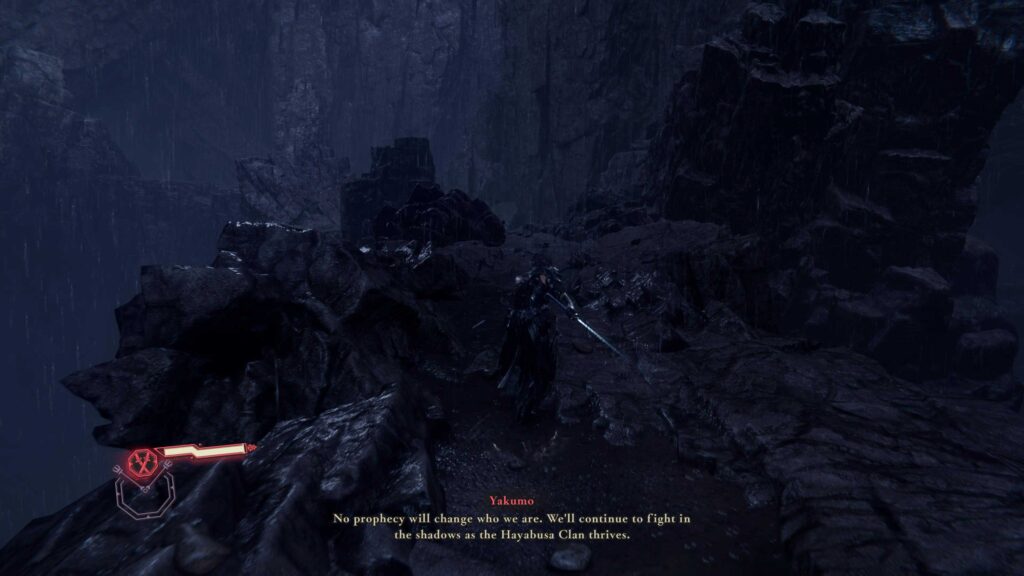
Joining him on his adventure are several other characters that also don’t hold their weight, with an inspired slightly higher pitch than they need for voice acting. Yakumo is the character primarily seen on screen, with all other characters often participating in the narrative by having conversations over a comm system, with most of these adding very little to the plot besides telling you where you need to go, or having a long dialogue about the place you’re going, while telling you where you need to go. Spoiler alert, it’s always the next shrine. They also serve to give low energy ‘Oh no, Yakumo died,” death cries. These have been annoying me from the first time I heard them, and this is true; this is a Ninja Gaiden game, so most players can expect to hear these a lot.
In fairness, nobody is actually here for the story, though, and its existence as a concept to interconnect a critical mass of fights works better than if you actually sit down and try to analyze it. And, here, it’s important to note, Platinum Games overwhelmingly succeeds as the combat is pretty damn great. Yakumo fights at a rapid pace, with weapons easy to flip between, so you can string multiple types of combos together. Characters don’t have health bars, which keeps fighting clean, using how bloody they get as a gauge to know if they are ready to finish with an uber violent finisher that keeps you immune while you perform it. There is also a secondary form added to each weapon that has a refillable gauge that you can use for powerful hits or to break certain enemies’ attacks, which adds an interesting layer of strategy that you need to balance while fighting at breakneck speeds. Using it isn’t hard, but getting the most out of how this can turn the flow of combat, especially against bosses, takes some serious effort.
There are some interesting twists here as well, with the closest thing to a parry system being added to the timing of your attack if it should hit theirs. Following up on this opening can be confusing, as it would with both the heavy and the light attack, with the game constantly expecting rapid, perfect button prompt follow-ups to take advantage of the more technical abilities you lack and add to your combos. More bizarrely, the dodge and block buttons are combined into one button, which proves to be about as horrible a decision as that sounds. Dodging into six attacks instead of blocking them became the bane of my existence, but to be fair, the dodge in general is a finicky mess that is as likely to seal your death as it is to get you out of danger. Actually, that’s more like 70/30, turns you into a corpse. Follow-ups to any quick move are also apt to backfire. While there are a lot of abilities to unlock, and none of them really upgrade your character, they add more technical skills that can be implemented in combat. Personally, I loved this approach that kept improving the flow state rather than a sense of scaled-down challenge due to Yakumo becoming more powerful. This being said, combos of one move or two moves could often get in the way of more basic but necessary combot inclusions, which kept a sense of off-balance combat throughout as well.
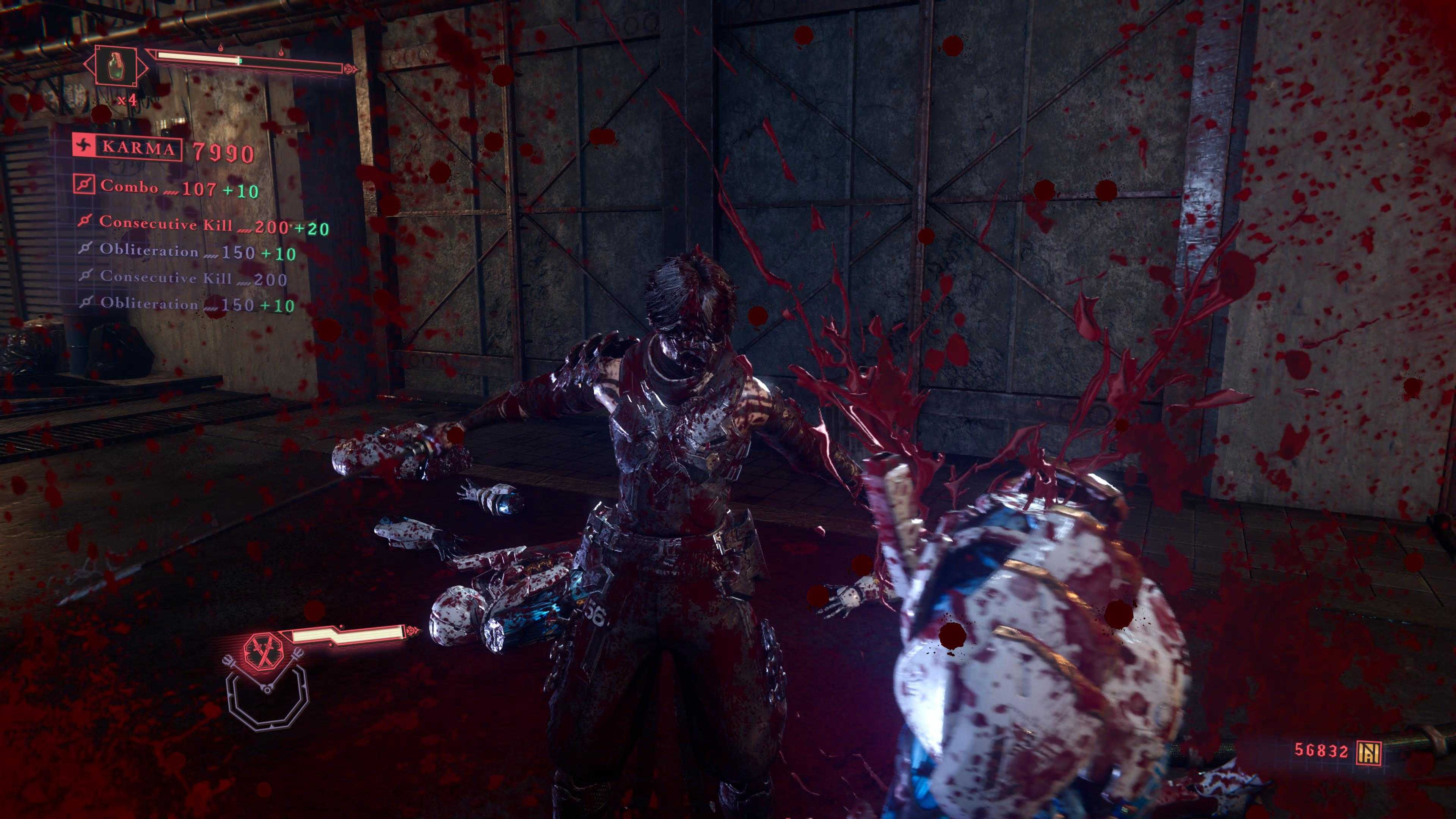
The most off-putting part of combat is the fact that the game focuses on hordes rather than tight and concise fights. Enemies can get the better of you (or at least me) in a one-on-one fight, no question, but the game genuinely throws a nonsensical amount at you all the time. This is annoying from the jump, but it gets far worse when you realize the worst of these fights can eat up to thirty minutes of time, or more. And, if you lose, you start the fight over, meaning main fights can feel like a time sink. Purgatory gates, which serve as the primary challenge arena, can get even worse with one that I timed out, taking me 42 minutes to complete, and almost 10 different tries, so you do the math.
Worst, upon completion, I realized I was constantly losing to the final boss of the area, so I was probably maxing out close to that every time. This compounds the secondary elements because, while most enemies drop healing orbs, they do almost nothing to heal you and require you to stop combat to grab them, a weird choice for a game that feels most confident at high octane speeds. Most of these fights become battles of attrition by the end of them, regardless of how they start out. At least the game has constant auto-save points to keep you from needing to redo obnoxious ones. Ninja Gaiden 4 makes a point to represent where enemies are on screen, but with enemies constantly just appearing, it’s hard to know who to go after. Worse, not all enemies need to approach you, so somebody who throws Shuriken might just start blending into the insanity. It is compounded and made worse by the lock-on system, which, in fights with over 10 people, dumbs your reaction speed well beyond making it worth it. The trade-off is that without it, you might accidentally start a combo that goes around your enemy rather than through them. The game also has a red border when you are low on health, which you will be a lot, which can make seeing the indicators harder.
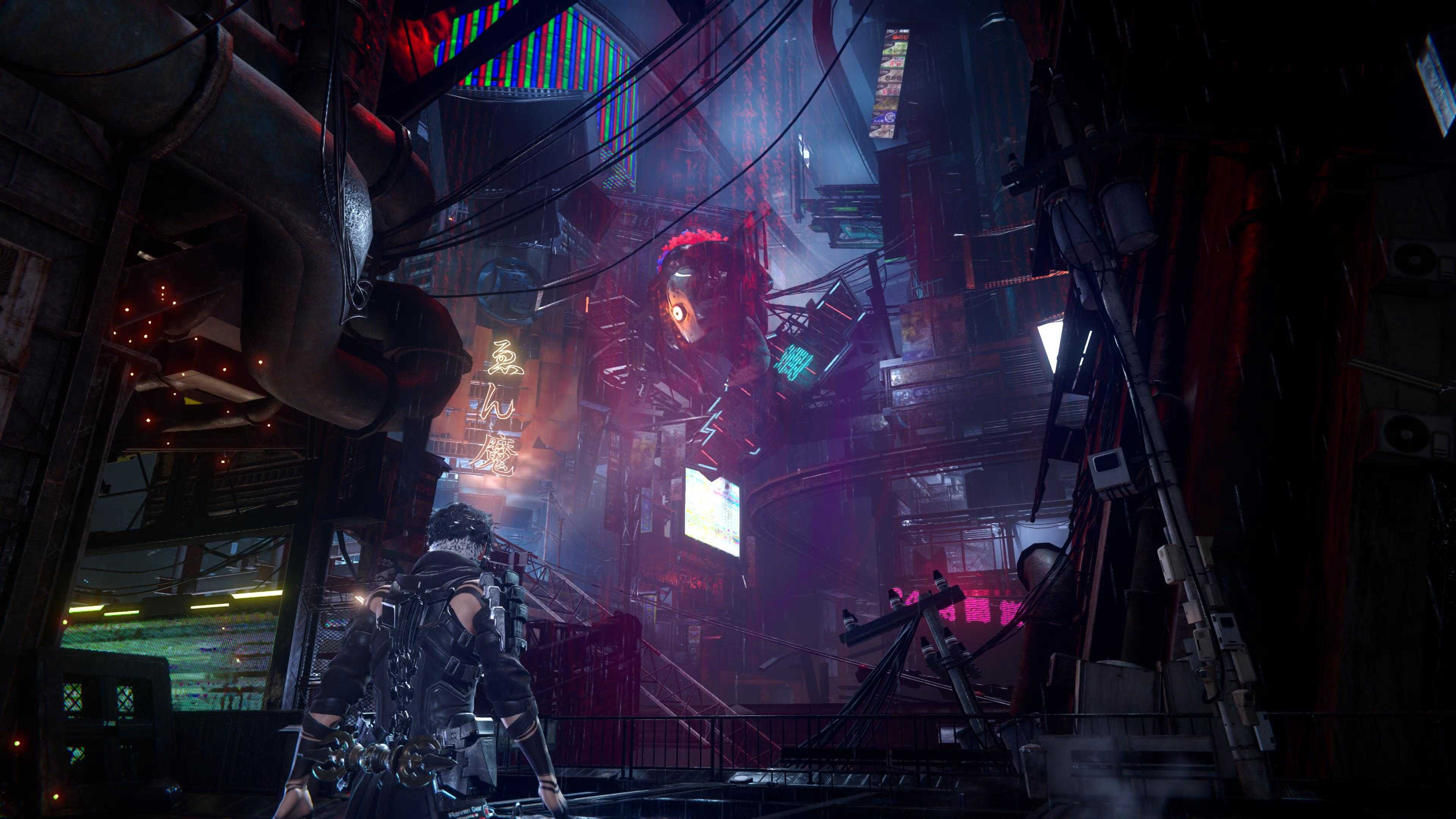
The bigger shame of this, and the constant arena fights, is that Ninja Gaiden 4 has a lot of moments that feel like they get close to that of the originals (my metric is Ninja Gaiden 2). Running through hallways often sees enemies jump you for a quick burst of adrenaline in moments that aren’t hard per se, but depend on what the game wants to throw at you, which is classic. There are also segments where you get an advantage and can blindside enemies. Let’s be fair, these exist to let you clear out some enemies so you get swarmed again, but I actually was able to clear one without instigating combat. Kinda by accident, but hey, that was the story of every parry I even landed, so I will take what I will get. Level design in general felt like Platinum Games in a nutshell, for better or worse. Wide symmetrical areas that devolve into generic factories rather than lean towards the awesome early levels of Tokyo and the Forest. Like most elements, the game makes a great first impression, but starts to show cracks in its progression.
Boss fights in Ninja Gaiden 4 are actually fun as you get further in the game, but they never reach the height of the former games, save maybe III. The first boss I fought (true boss rather than the stage boss), I beat with relative ease. Remember all those lucked into parries I had? Yeah, I kept landing them on her cause my timing was just synced up, which gave me free combo after free combo. They all have two health bars, with the second giving the enemy more combos. You just need to wait out the attacks with some minor alterations to make it harder. I assumed that the first fight would get harder from here, but after the enemy’s big attack, I had to dodge. I accidentally created the same loop… Again… And won. To make clear, there is no argument that I knew what I was doing, but, still learning how to play the game, and a win is a win, and I doubt I was unique in that luck. It was a bad first taste, but the later bosses actually had much better variation and moveset, though I found the entire backend to be much easier than the opening hours.
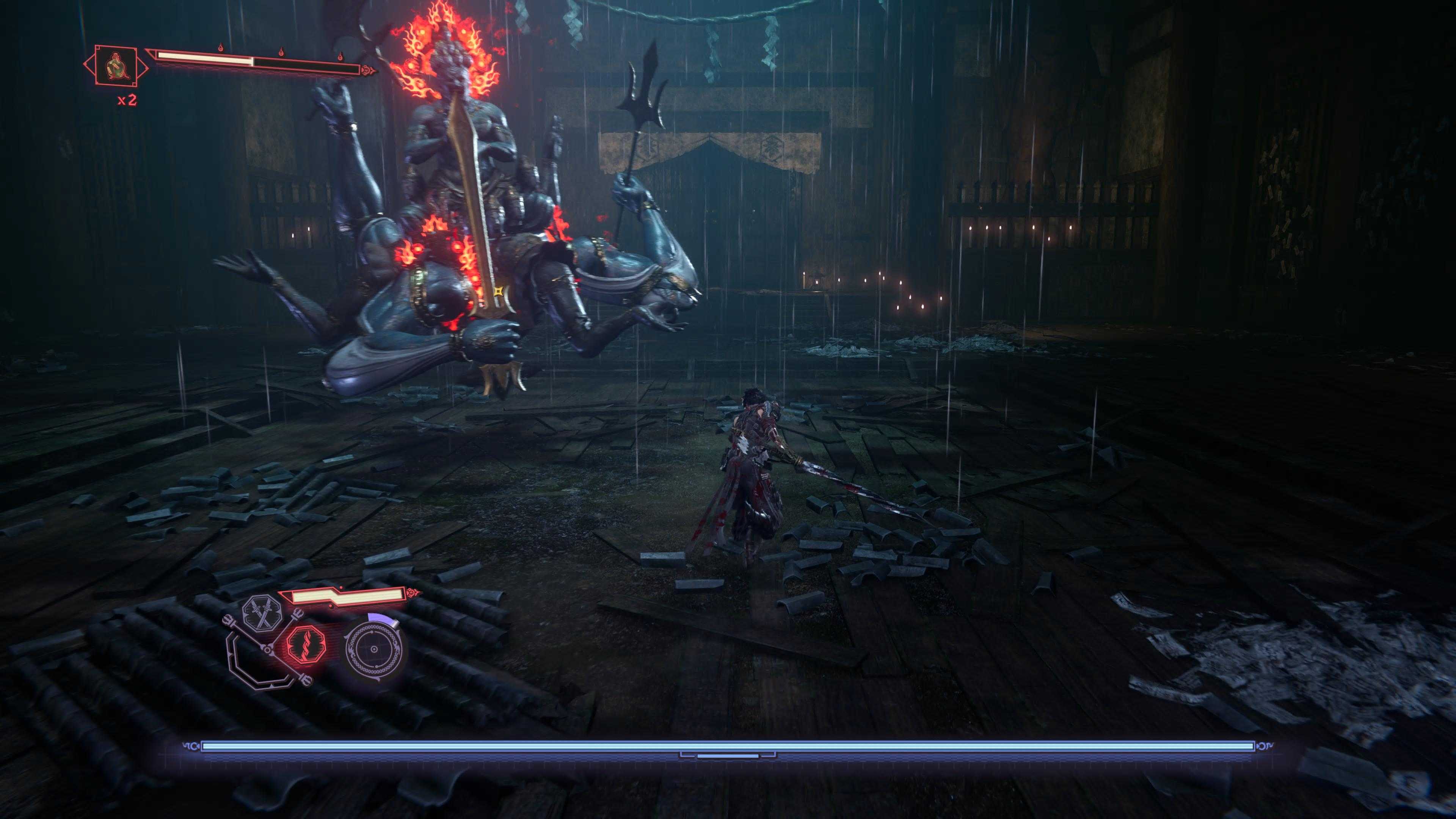
Nothing represents this more than the traversal of stages, which consists of more than just wall running. Wall running was always an issue, and this doesn’t improve it much. Try to get an enemy on top of a crate, you might find yourself running left and right into every attack the enemies have. Annoyingly, in combos and off of walls, there can be a delay to blocking or dodging that turns the ability into an obstacle rather than a bonus. You can throw yourself into some pretty boss combos from this mistake, though, so it is definitely not all bad. Stages also have grappling points that could be inconsistent when using them; in fact, most button prompts end up becoming your own worst enemy as you jump over a pitfall, and the trigger appears for a second, then fades away for like no reason.
This is nothing compared to the traversal portions of stages, when you have to ride rails or fly from point A to point B. In most games, Platinum Games should know this since they do it a lot, and have break-up sections to the action that serve as a fun change of pace. Think of the motorcycle portion in Final Fantasy VII. These segments are everywhere, and as they include more abilities, they get longer and more complex, with a camera that occasionally struggles to keep up, and unruly controls and button prompts as you just between six rails to avoid the trains or try to figure out where you are actually going while gliding. This becomes more pronounced in the back half of the game, where there are portions that feel like this is the core gameplay, and fighting is just secondary as you traverse these convoluted paths and occasionally jump on a platform to fight five people, then continue as it gets crazier and crazier. I could almost stomach this if it were fun, but I was burned out on these segments half a game ago.
Upon beating the game, you are rewarded with like four modes, drastic changes to how you can replay the game, and a new mode that is only for the most masochistic of Ninja Gaiden fans, and more. That’s where games like this understand their worth, and the replayability is high here if you plan to play again, maybe go for completion, though trust me, the road ahead will be harder than that first playthrough. I just wish that I personally wanted to go at it again with the full toolkit, but one run was enough for me. I don’t have enough sanity, but what remains is too valuable to me to die another million times.
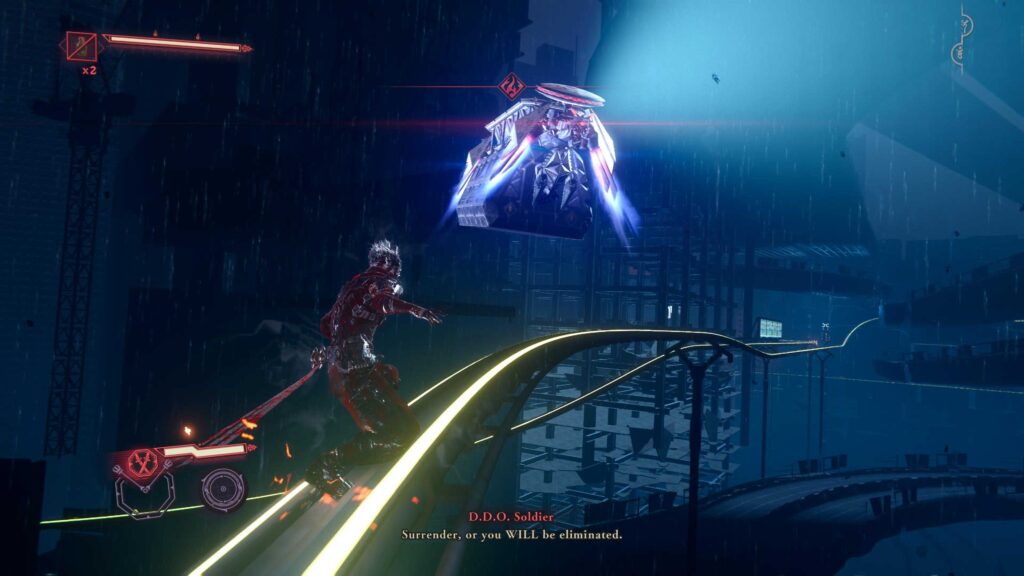
Verdict
If we are going to compare Ninja Gaiden 4 to its predecessors, it is a strong return to form. It never hits like 2 did, but compared to 3, it is a much more genuine experience that players have been waiting years for. At its heart, it is competent, and the fact that the combat is so good detracts from most of the negatives throughout, though with traversal, they forced me into it so often that it just can’t. This is also the most engaged I have been with a Platinum Games game in a long time, with even Bayonetta 3 failing to pull me through it like Ninja Gaiden 4 did, and I absolutely love Bayonetta, so this is saying something. It doesn’t reach the heights I was hoping it might. I think I set myself up for that disappointment, but drawing your sword and carving a path through is worth your time all the same.
Remember to follow us on Twitter, Facebook, and Bluesky to keep up to date on everything we have going on!
Reviewed on PlayStation 5, also available on Xbox Series and PC
Developer: Platinum Games, Team Ninja
Publisher: Xbox Games Studio
Release Date: October 21, 2025
Pros:
+Combat system as a whole
+ Skill based combo unlocks
+Replayability
+Boss Fights
+Awesome finishers
Cons:
- So Many Hoards
- Level Design
- Environment Traversal
- Occasionally feel like more luck than skill
-
Ninja Gaiden 4